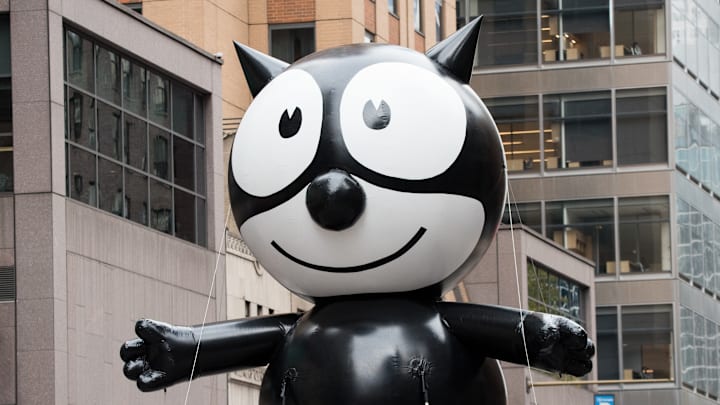When Macy’s first introduced a helium-filled character balloon into the Thanksgiving Day Parade in 1927, people watching from the sidewalks of New York didn’t quite know what they were looking at.
Initially, the parade had relied on animals from the Central Park Zoo—everything from camels to bears to monkeys. This caused some issues, including fearful children and tired animal handlers. Macy’s executives started looking for an alternative that was safer and more controlled, but still visually dynamic. This led to an idea that was novel for its time: giant floating balloons shaped like characters!
Macy’s needed someone for the job, so they hired a man by the name of Tony Sarg, a German-American puppeteer and illustrator who had already been famous for his animated holiday window displays at Macy’s. He wanted to create upside-down marionette figures that floated instead of dangling on strings. So, he partnered with the Goodyear company, where they experimented with rubber fabric and large air-filled designs.

Enter Felix the Cat
Felix the Cat was chosen as the first character balloon simply because he was everywhere at the time—newsreels, toys, print comics, store displays, even novelty clocks. To audiences in 1927, Felix was as recognizable as any movie star, which made him the obvious candidate to float above the parade.
The balloon itself looked almost comically simple by today’s standards: stiff, rounded edges, a painted-on grin, and a body that didn’t bend so much as tilt. But in that moment, seeing Felix drifting above Manhattan gave people the uncanny feeling that a cartoon character had stepped out of the screen and into the real world.
The first Felix balloon was filled with oxygen—helium wouldn’t make its parade debut until the following year—but the early work between Sarg and Goodyear still set the blueprint for every balloon that followed.
Macy’s Originally Set Balloons Free—Including Felix the Cat
What Macy’s didn’t account for was how you get gigantic rubber balloons down once you’ve filled them up. Due to technology at the time, or lack of a better idea, they simply let the balloons go. Felix the Cat eventually burst. This practice excited spectators, but was hated by the environmentalists and anyone who understood a little bit about aviation safety in the 1920s.
In 1932, a pilot decided to try to capture these renegade balloons with her biplane. She almost crashed, though, when the balloon wrapped itself around her wing.
More Like This:
Add Mental Floss as a preferred news source!
The near-miss was enough to end the tradition for good. Macy’s realized that releasing multi-story balloons into open airspace—especially when ambitious stunt pilots started chasing them like trophies—was a disaster waiting to happen. By the following year, the practice was officially scrapped, and the parade shifted toward safer, more controlled handling techniques that eventually evolved into the system used today.
From that point on, the balloons were treated less like oversized toys and more like aircraft. It was a far cry from the early days, when Felix the Cat could simply float off toward the Atlantic without anyone giving it a second thought, but that first balloon—simple, stiff, and a little awkward—changed the parade forever.
And while Felix didn’t survive his voyage, he became a legend the moment he was let go from the handlers’ grip and drifted out of sight.
